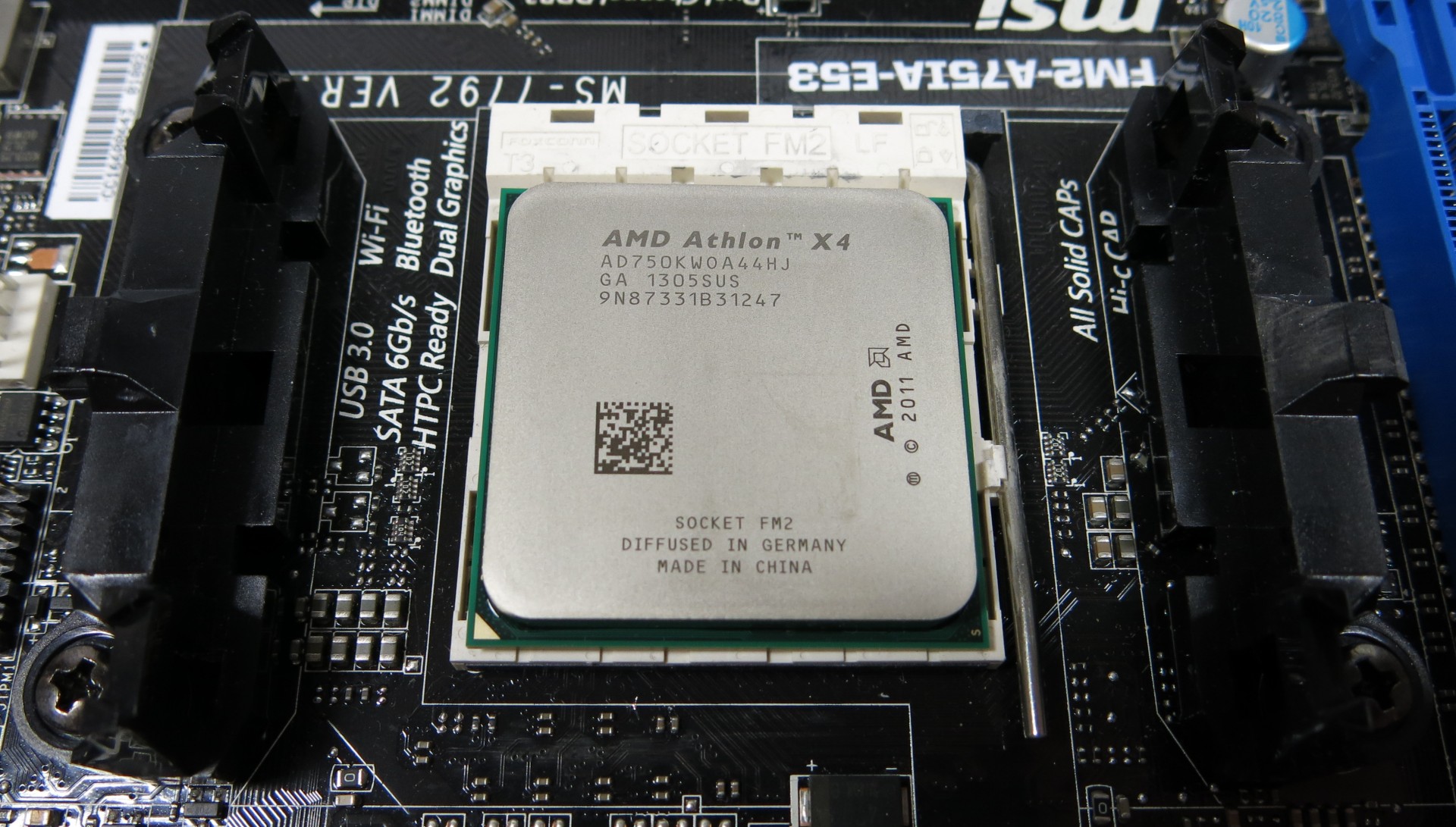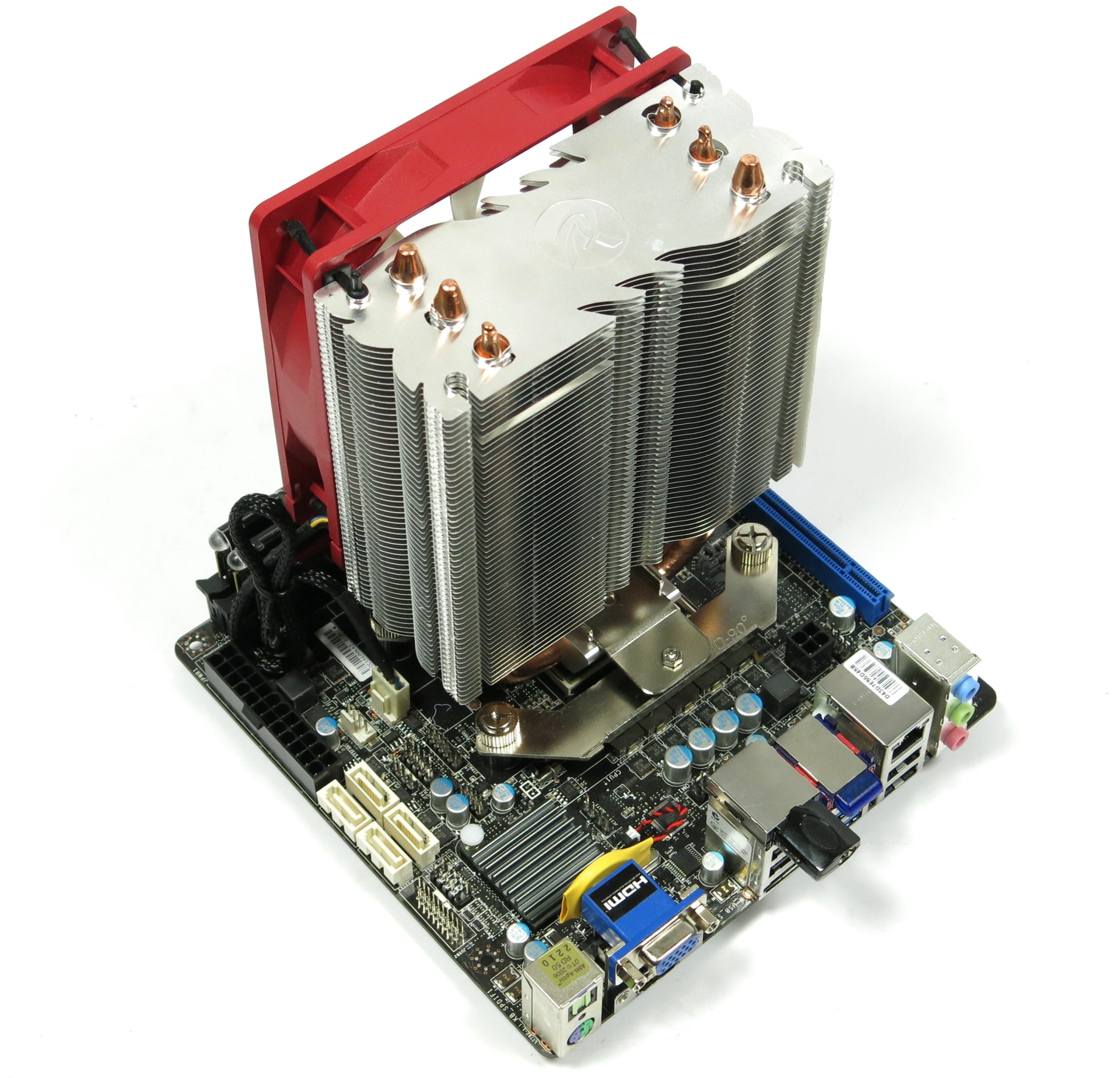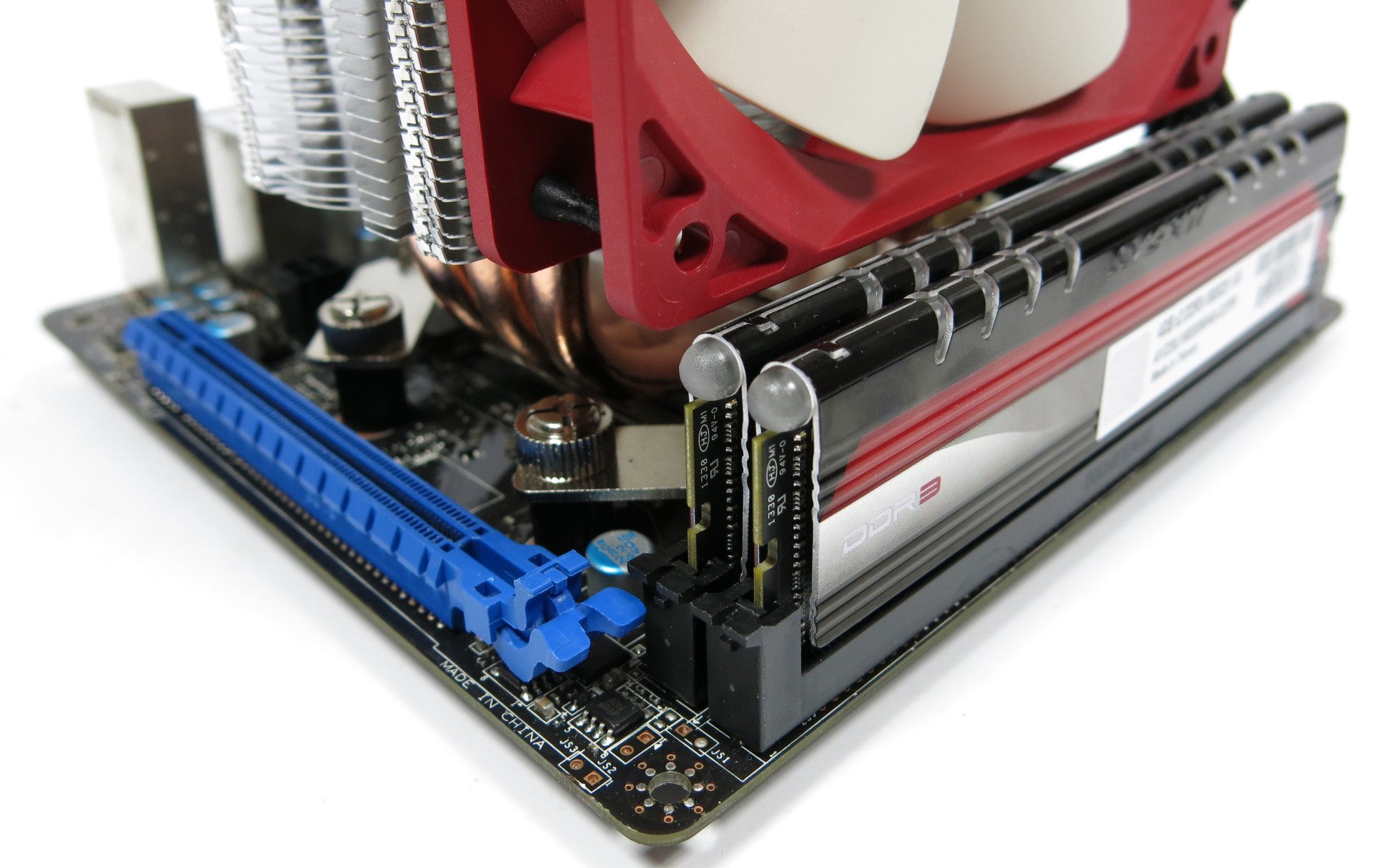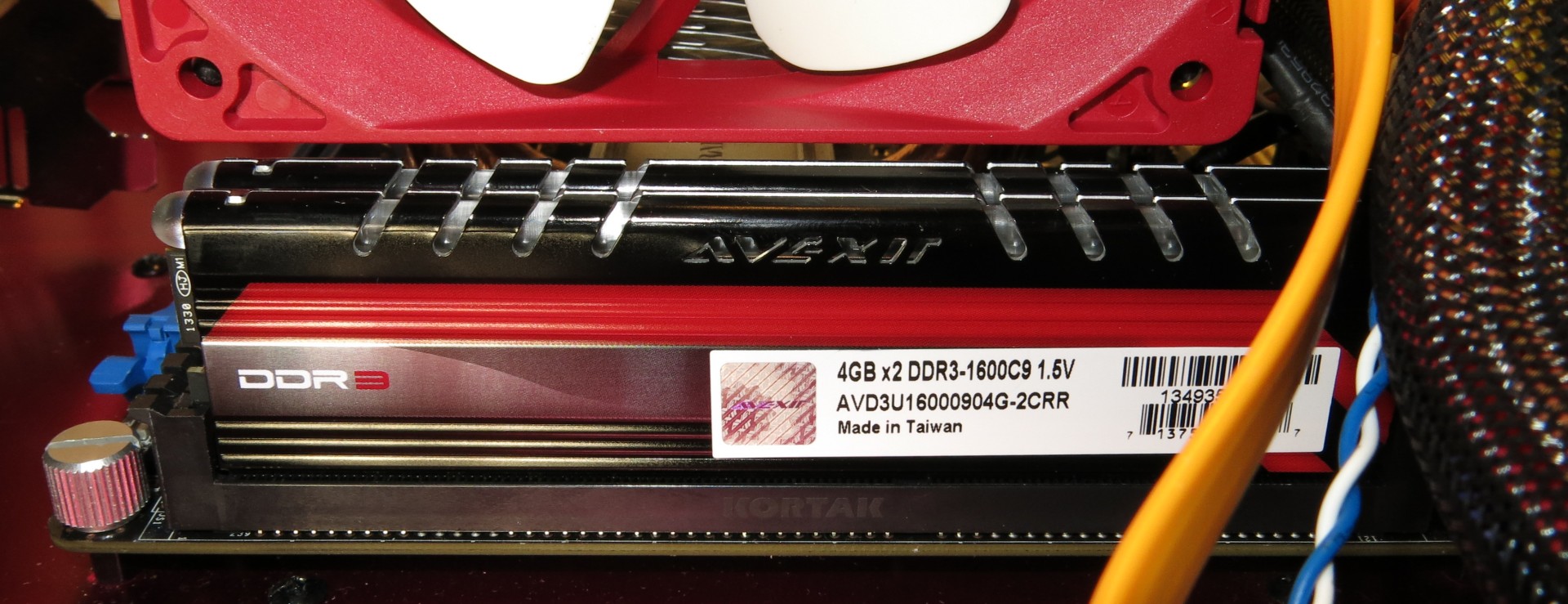Build A Balanced AMD-Based Gaming PC On A Budget
We’re revisiting an age-old question with a modern twist: can you build a balanced gaming PC with a sub-$100 CPU and not be limited by graphics performance? When you pick the right parts, a capable machine is easily within reach for very little money.
Picking A CPU, Motherboard, And RAM
CPU: An Inexpensive Choice with Overclocking Potential
As mentioned, AMD's Athlon X4 750K is our insider tip, selling for a scant $80 and easy to overclock. Its base stock clock frequency is 3.4 GHz, and Turbo Core pushes that up to 4 GHz, depending on the load you apply. Of course, the K-series Athlon can also be overclocked through its adjustable multiplier.
There's another way to overclock this chip: configure the maximum Turbo Core clock rate of both modules to increase when temperature, power, and load allow. A default ceiling of 4 GHz is advantageous because it keeps the processor running cooler in the heavily-threaded tasks that hit both modules, while ramping up performance when only one is needed. If you're lucky, it should be possible to push the 750K to a maximum Turbo Core rate of 4.5 GHz with a respectable cooler.
Motherboard: Socket FM2 or FM2+
The Athlon X4 750K fits either processor interface, and the motherboard form factor you pick will probably depend on the case you choose. We chose a mini-ITX platform for our Red Devil built (the fancied-up one), since it includes bundled Wi-Fi and Bluetooth without breaking the bank. MicroATX boards sell for even less. Some cost as little as $40.
And there's another reason to try the Athlon X4 750K. You simply can't get the same level of performance from an Intel-based CPU/motherboard combination (though we're really excited about the upcoming Pentium with an unlocked multiplier, which could very well decimate AMD's entry-level enthusiast advantage). Our efforts to build something similar with a Pentium fell short; it couldn't keep up with this overclocked Athlon X4. It was fast enough to not bottleneck a Radeon R7 260, but that doesn't come close to giving us the performance we need for FHD in our benchmark suite.
Because this story went live in Germany first, our team over there went with an MSI FM2-A75IA-E53 motherboard. While it might have been a best-fit for them, Newegg no longer lists that platform in stock and instead suggests the A88XI AC as an alternative. The A88X FCH is a step up, as is the 802.11ac Wi-Fi controller. But a $100 price tag is higher than even our CPU of choice.
There are plenty of affordable alternatives out there from companies like ASRock, Biostar, and MSI dipping down below $50. A more premium option could be the ASRock GM2A78M-ITX+, which satisfies our mini-ITX requirement and sells for $80.
RAM: Avexir DDR3-1600 8 GB Kit with Red LED
Let's spring for a bit of eye candy, shall we? Avexir's DDR3-1600 CL9 kit is neither too large nor too small, and it generally fits the system well. The Athlon X4 750K’s integrated memory controller could conceivably handle higher data rates. However, our benchmarks have shown that potential gains are in the single-digit range, if they're measured at all. Of course, if you'd like to throw more money at the memory issue, you're more than welcome to.
Get Tom's Hardware's best news and in-depth reviews, straight to your inbox.
Remember that our CPU doesn't have integrated graphics, so the benefit you'd normally see from lots of memory throughput feeding an on-die GPU isn't there. Optimizing the timings on a DDR3-1600 kit should yield plenty of performance without hammering your bottom line. And then there's the fact that this kit looks nice as well, especially since the pulsing red lights can be seen from outside of our case through the air vents.
Price Update
Before moving on, let’s take a look at our expanded table (feel free to use it as a shopping list). Prices fluctuate on a daily basis, but we just updated it again to reflect the most recent changes.
| Components | Baseline Build | Price | Red Devil | Price |
|---|---|---|---|---|
| Graphics Card | AMD Radeon R7 260X | $120 | AMD Radeon R9 270Nvidia GeForce GTX 750 Ti | $150 |
| CPU | AMD Athlon X4 750K | $80 | AMD Athlon X4 750K | $80 |
| Motherboard | Socket FM2 or FM2+ | $45 | Mini-ITX Socket FM2+ | $85 |
| RAM | 8 GB DDR3-1600 Kit | $65 | Avexir 8 GB DDR3-1600 LED Kit | $75 |
| Total | Row 4 - Cell 1 | $305 | Row 4 - Cell 3 | $390 |
Current page: Picking A CPU, Motherboard, And RAM
Prev Page The Quest For The Right Graphics Card Next Page CPU Cooler
Igor Wallossek wrote a wide variety of hardware articles for Tom's Hardware, with a strong focus on technical analysis and in-depth reviews. His contributions have spanned a broad spectrum of PC components, including GPUs, CPUs, workstations, and PC builds. His insightful articles provide readers with detailed knowledge to make informed decisions in the ever-evolving tech landscape
-
esco_sid It does not make sense to spend $80 on a case for a budget entry system why all the focus on eye candy at additional cost ? for the money you can get better hardware such as fx-6300 setup with better graphics card that's what i would be worried about while on a budget.Reply -
Memnarchon The minimum version is a trully great budget build, while the Red Devil is more ITX luxury build. An SSD and $80 case on a gaming budget? ;pReply -
Zeh Nice article, but I guess it's really important for readers to understand that the extra stuff is completely optional and the main point is #415 gets you a very decent (if not Good) gaming PC.Reply
We have $315 spent on eye candy, SSD and a little bit more thermal headroom, which is 76% of the 'cheap' budget.
Personally, I would only get the SSD. Maybe the MB with Wifi if I'm building something really small and would like to avoid cable clutter. Definately not gonna spend $50 on a bit more mhz, neither $55 on a case for cheap hardware, -
ddpruitt Now the trick is to benchmark both systems. Let's see if the "Bare Bones" build can keep up with the eye candy Red Devil build. I doubt there's a huge difference in performance, or perceptible noise levels. For a system that costs almost twice as much you might be able to be handle cost by going for functionality instead of looks. 240Gb SSD (or potentially more), better CPU or better GPU, though to each his own.Reply
For bonus points it would be nice to compare the budget build to a console in the same price range, but alas an Apples to Apples comparison isn't possible. -
Onus I really want to like articles like this. I lurk at the "budget" end of the spectrum myself, and some of the analysis on this one is really good, but I absolutely agree with Zeh; so much optional stuff was covered that it really distracted from what I expected to be the main point.Reply
I would have liked to have seen the bottom dollar build done first, followed by a discussion of what upgrades or enhancements might be substituted.
Also, at least a few benchmarks are needed, if only to show that yes, this is a competent gamer, especially if "good" but less-than "UltraMaxOhWOW" settings are used. -
vertexx Nice article. This is definitely the way to present gaming system design, especially with graphics card selection based on CPU scaling. I really think the "Best Gaming CPU/GPUs for the $$" series could benefit from this approach. Instead of separating the CPU/GPU, you really want to look at the best combo's for the $$.Reply
I think you handled the "baseline" vs. "Red Devil" options well. The great thing about a budget build is not necessarily being a race to the bottom, but it's all about saving money so you can spend some on smart components that will add to the enjoyment of building and running the PC. With the case selection, that's a smart selection. Who wants to build a PC in a case that you're going to want to replace in 6 months? Perhaps you could have offered a cheaper alternative, but I like the choice to spend the extra $$ on the case.
The only letdown I have is on memory scaling. There is a very long thread of debate in the Best CPUs for the $$ article about how strongly memory scaling impacts the 760K CPU because of its lack of L3 cache. The key seems to be that you also need to overclock NB freq. Because there are simply no reviews out there with a fully overclocked 760K platform, I was really hoping when I saw this article that the memory scaling would have been included.
@Damric - if you're reading this article, perhaps you can chime in.
Overall though, this is a great read! I can't wait to see a OC'd 760k vs. the upcoming OC'd Pentium in a budget shootout. If this is done, you really need to look at game selection and analyze games that optimize for more cores vs. the single-threaded performance in which the Pentium will excel.
-
Falcorion On the GPU selection page at the top it should read "Finding the Right GPU" not "Finding the Right CPU".Reply
Also, is there a reason we completely dismissed the r7 265?
In fact it seems like you looked over a LOT of good value choices for a budget system.
Tom's Hardware selections for a lot of their tests lately have had weird hardware choices.... -
Falcorion Also, I wanted to add that your builder installed the PSU the wrong way, the fan should be facing the vent on the bottom, not the metal plate below the motherboard.Reply



